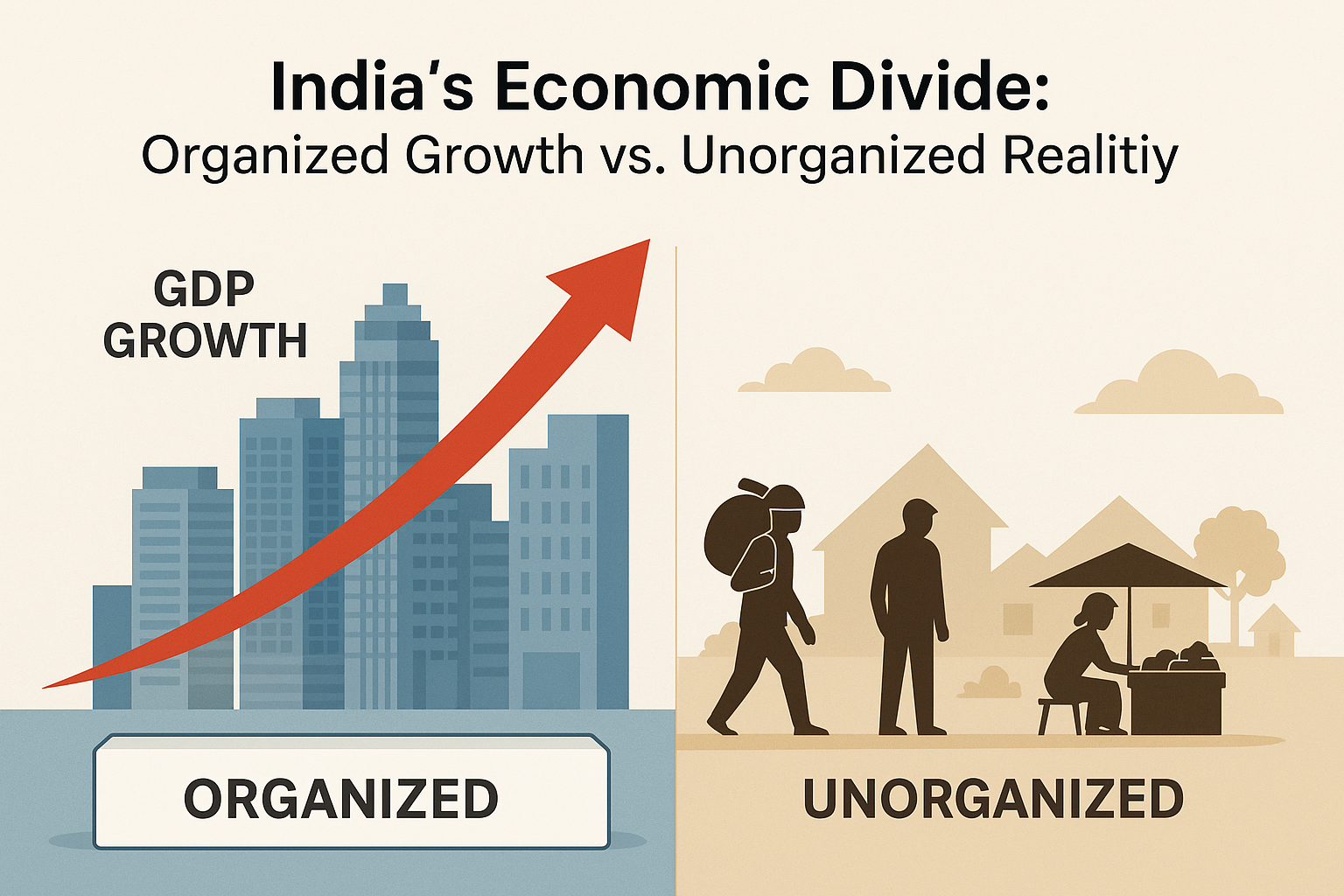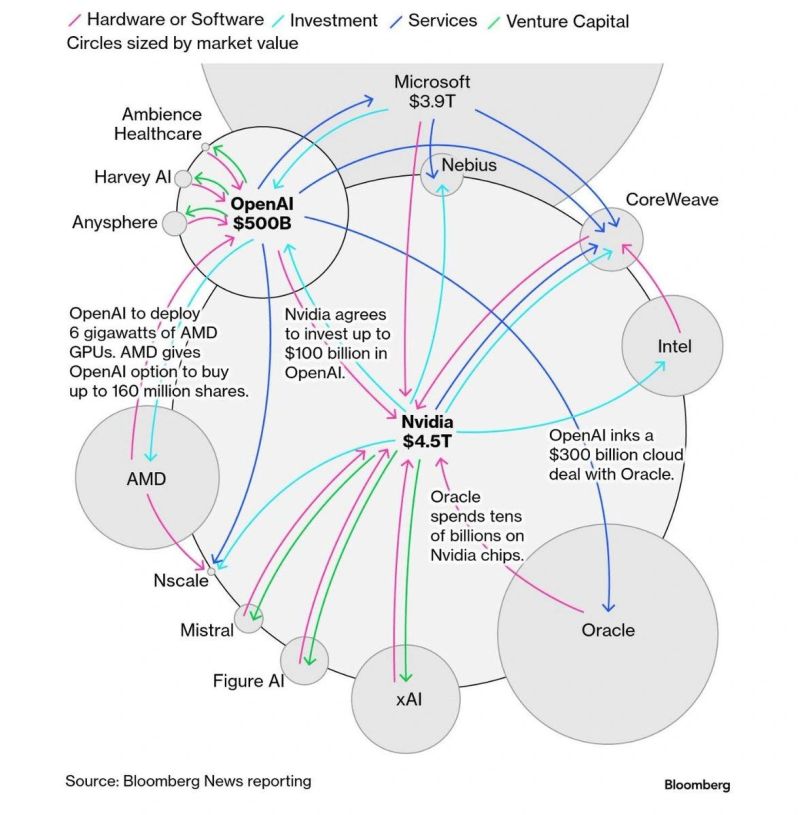Introduction
India’s economy presents a paradox. On one hand, the country is among the fastest-growing major economies in the world, powered by booming industries, digital innovation, and foreign investments. On the other, nearly 94% of India’s workforce operates in the informal sector—outside social security nets, with unstable incomes and limited access to credit or technology.
This duality creates a misleading picture of progress. While the organized sector contributes most to GDP, the unorganized sector bears the brunt of economic shocks. For professionals, managers, and policy thinkers, understanding this divide is essential to envisioning inclusive and sustainable growth.
Background
India’s economic structure is built on two contrasting pillars:
- Organized Sector: Comprising registered companies, MNCs, financial institutions, and government bodies that comply with tax and labor laws. It accounts for a major share of GDP and exports.
- Unorganized Sector: Consisting of micro-enterprises, farmers, daily wage laborers, and small service providers. It employs the majority of the workforce but contributes only modestly to output.
Post-1991 liberalization, India witnessed rapid industrialization, urbanization, and financial reforms. However, these benefits remained concentrated in the formal sector. The informal workforce—essential for services, logistics, and supply chains—was left without systemic support or representation.
Timeline: Key Economic Events Shaping the Divide
1991 – Economic Liberalization:
India opened its markets, encouraging private investment and foreign trade. The organized sector expanded rapidly, while informal workers faced rising competition and compliance barriers.
2016 – Demonetization:
The sudden invalidation of high-value currency notes disrupted cash flows that fueled informal trade. Millions of small vendors and laborers lost livelihoods.
2017 – Goods and Services Tax (GST):
While GST simplified tax structures, it increased compliance costs for small traders. The inability to claim input tax credits made informal suppliers less competitive.
2018–2019 – NBFC Crisis:
Liquidity crunch in non-banking financial companies restricted credit access for micro and small businesses dependent on these institutions.
2020 – COVID-19 Pandemic:
Lockdowns exposed the fragility of informal employment. Migrant workers walked hundreds of kilometers home as informal enterprises collapsed.
2021–2025 – Digital Recovery:
Formal businesses adopted automation and digital platforms to recover, but many informal enterprises lacked digital literacy or financial access to adapt.
Why It Was Significant
The divide between India’s formal and informal sectors highlights structural flaws that impact economic resilience, employment generation, and social stability.
1. GDP’s Hidden Bias:
GDP growth reflects the organized sector’s performance, overlooking the unorganized sector’s contraction. This distorts policy focus and creates an illusion of overall prosperity.
2. Uneven Job Creation:
High-value industries create fewer jobs. As formal firms automate, employment opportunities shift toward informal or gig-based work, often with poor benefits and job security.
3. Rising Inequality:
Income gaps between organized workers and informal laborers have widened. This limits purchasing power, reducing domestic consumption—a key driver of long-term growth.
4. Policy Blind Spots:
Reforms like GST and labor codes aim to formalize the economy but often disregard the unique challenges of small enterprises. The absence of granular data on informal activity further weakens policy design.
Key Lessons for Professionals
Lesson 1: Sustainable Growth Requires Inclusion
Economic success cannot be defined by GDP alone. Businesses and policymakers must ensure that small suppliers, gig workers, and informal partners are integrated into mainstream value chains.
Lesson 2: Data is Power
Informed decision-making depends on accurate, ground-level data. Organizations should invest in analytics and field insights to understand market realities beyond formal metrics.
Lesson 3: Leadership Requires Empathy
Just as policies impact the weakest links, so do corporate strategies. Leaders who consider the ripple effects of decisions—on vendors, communities, and contract workers—build stronger, more trusted brands.
Lesson 4: Invest in Human Capital
Training, reskilling, and digital literacy programs should extend beyond formal employees. Building capacity in the informal workforce strengthens the overall economic ecosystem.
Lesson 5: Collaboration is the Future
Public-private partnerships, microfinance support, and digital inclusion initiatives can bridge the formal-informal divide. Professionals across sectors must think beyond silos to enable shared growth.
Final Takeaway
India’s economic divide is a lesson in contrasts—between visible progress and invisible struggle, between growth and inequality. The organized sector may dominate statistics, but the unorganized sector defines India’s human story.
For professionals, the key takeaway is simple yet powerful: growth must be both measurable and meaningful. Sustainable success comes not from numbers alone, but from nurturing inclusion, empathy, and balance between efficiency and equity.
Bridging this divide is not just an economic goal—it’s a leadership responsibility for those who envision an India where prosperity truly reaches every worker and enterprise.




